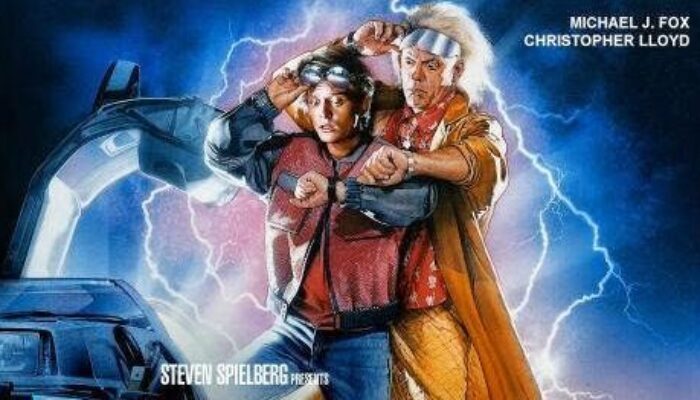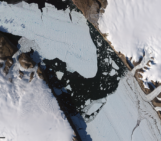
Fourty years ago, the movie Back to the Future (1985) revved its DeLorean into some hearts, zipping watchers back to 1955 with a grin and a flux capacitor–fueled paradox. Today we’re not just celebrating that original joyride’s 40th anniversary; we’re strapping in for the wild flight of Part II (1989), the movie that dared to ask, “what if Marty McFly really could hoverboard through 2015?”
Why shine the spotlight on Part II instead of the beloved first chapter? Because, while the original riffed on nostalgia, the sequel shot us straight into speculative pop‑science: a cinematic crystal ball full of flying cars, weather “on/off” switches, and Mr. Fusion gobbling garbage like it was candy. Now that we’ve lived (and scientifically measured) much of our actual 21st century, we can see which of those sci‑fi dreams stuck the landing and which crashed harder than Doc’s experimental time circuits. It’s time to trade DeLorean daydreams for data‑driven reality, to chuckle at the hoverboard hang‑time we never quite mastered, and to marvel at the fusion punch we’re still trying to perfect. Buckle up, our geoscientist hearts are racing faster than a plutonium‑powered engine as we compare Hill Valley’s “future” to the real one we’re living in 2025. Great scott! let’s roll!
Hoverboards and levitating tech
Predicted: In 2015, Marty glides around on a hoverboard – a board that levitates above ground. Reality: We don’t have true hoverboards that work anywhere, but scientists have indeed explored magnetic levitation. Superconducting materials cooled to very low temperatures will repel magnets and float a few millimeters above a magnetic track. As an Ithaca College physicist explains, “properly cooled, a superconductor will resist magnetic attraction and actually float above a magnet”, much like Marty’s board. In practice, Lexus even demo’ed a “Slide” board that hovers, but only above a special superconducting ramp. In short, magnetic hover technology exists (maglev trains and small demo boards), but an everyday board that hovers over any surface is still science fiction.
Real-world takeaway: As of 2025, all practical maglev travel uses dedicated magnetic guideways, not everyday streets. Efforts like Hendo and other prototype boards rely on strong magnets or compressed air, and acoustic levitation can float tiny objects, but none meet Hill Valley’s swagger yet. It’s a neat demonstration of superconductivity, but without cooled superconductors built into our roads (and far higher budgets), we’re not zipping around on hoverboards.
Fusion power and Mr. Fusion
Predicted: Doc Brown’s Mr. Fusion Home Energy Reactor magically turns garbage into fuel, a nod to abundant fusion power. The movie imagines easy clean energy from waste.
Reality: Fusion research has advanced, but only recently have experiments achieved tiny net energy gains. For decades we’ve known fusion is tough, but in late 2022 the Lawrence Livermore National Laboratory (NIF) briefly broke even. In one shot, lasers put in 2.05 MJ of energy and the fusion fuel spat out 3.15 M, a milestone called ignition. By 2025, NIF reached 8.6 MJ yield on ~2.08 MJ input (target gain ≈4.1).
However, these are short pulses, not continuous power plants. Our current fusion projects (tokamaks like ITER and NIF’s lasers) still need huge facilities and fuel (deuterium-tritium), and long-lived, steady fusion power is likely decades away. In sum, Back to the Future was optimistic: it knew we hoped for new energy, and indeed fusion could be game-changing, but the real timeline is slower and requires enormous engineering.
Weather control (no such luck) and climate change
Predicted: In the movie’s 2015, people casually joke about “turning off storms” as if weather were a tap. Doc even quips about precise forecasts.
Reality: NOAA and meteorologists make forecasts, but no one can “create, steer, or stop” weather at will. NOAA explicitly debunks weather-modification conspiracies: there is no technology to strengthen, weaken, or steer hurricanes or other storms. Cloud-seeding (spraying silver iodide into clouds to encourage rain) happens in some regions, but it’s done by private companies for limited goals (like boosting snowpack) and hasn’t been shown to reliably change large-scale weather. “NOAA does not modify the weather, nor does it fund or participate in cloud-seeding or any other weather-modification activities,” the agency confirms. In short, reality has no on/off switch for rainstorms – we can forecast them better, but not turn them on or off at will.
On climate, the film was silent, but our 40 years have seen major changes. The Intergovernmental Panel on Climate Change (IPCC) reports human activities have already raised global temperatures by about 1.1°C above pre-Industrial levels. Every part of the climate system is changing. For example, warmer air holds more moisture, intensifying the water cycle: we see heavier rain events and worse floods, as well as stronger droughts in many regions. Arctic warming is nearly four times faster than the global average, and ice sheets and glaciers are melting. These shifts are unprecedented on multi-millennial timescales (IPCC notes that many observed changes are “unprecedented in thousands, if not hundreds of thousands, of years”).
The bottom line: Back to the Future thought we’d be twiddling meteorological knobs by 2015, but in reality, we’re grappling with a changing climate we can’t quickly control. Forecasts and climate models have become far more sophisticated (satellites and supercomputers help), but Nature still calls the shots.
Cities, land use, and ecosystems
Predicted: The movie’s 2015 shows futuristic malls and skyscrapers but doesn’t say much about farming, forests or sprawl. (One gag: Doc Brown’s mutant pig, fed with chicken legs, hints at biotech shenanigans in the environment (a grim joke about lab-grown GMO animals.)
Reality: On Earth, land use has changed dramatically. Global urban areas have exploded: a recent study published by our Journal Earth System Science Data found that from 1992 to 2020 the fraction of land covered by cities grew from about 0.22% to 0.69%. That’s more than a tripling of urban footprint in just three decades, as rural and wild lands gave way to suburbs, roads, and infrastructure. Agricultural areas also expanded to feed 8+ billion people (USDA reports crop land grew ~7.6% from 1960–2020), but some gains came from clearing forests or prairies.
Speaking of forests: humans did cut huge tracts. In the mid-20th century, global deforestation peaked (e.g. the 1980s saw ~150 million hectares lost). Encouragingly, that rate has since slowed. The latest FAO data (via Our World in Data) show net global forest loss fell from about 78 million hectares per decade in the 1990s to 47 million in the 2010s. Many countries are reforesting or naturally regrowing woodlands, partially offsetting losses in the tropics. But 47 Mha of net loss per decade is still an enormous change (equivalent to >4× Germany each decade). So yes, humans are reshaping land like never before: sprawl, deforestation for agriculture, and new renewable energy sites all alter the landscape in ways Back to the Future didn’t predict, but geoscientists document every year.
Deep time perspective and moving forward
Unlike a time-travel movie, Earth science thinks in deep time – millions of years. Our quick 40-year slice is a blip on the geologic timeline. For context, atmospheric CO₂ has jumped by about 50% since pre-industrial times (now ~420 ppm versus ~280 ppm in 1750). That level hasn’t been seen since the Pliocene (~3 million years ago) when global temperatures were several degrees higher. IPCC scientists stress that the climate changes underway have no recent analog, and “the past, present and future climate is now much clearer”: an Anthropocene anomaly. In other words, our world in 2025 is very different from 1985 geologically, even if Back to the Future treated 2015 as an almost cartoonish sci-fi city.
Looking ahead: geoscience tells us the next 40 years will be full of big challenges and (hopefully) innovations. We can imagine partial “retrofits” of the movie’s visions: perhaps cars that hover just above magnetic guide-ways, or modular reactors fueled by nuclear waste or fusion breakthroughs (ITER and startup companies are racing to build demo reactors). We may see serious climate intervention research (like stratospheric aerosol tests under tight control) or a major expansion of renewable energy farms, altering Earth’s albedo and land use. Coastal cities will have to adapt to rising seas, using knowledge from past sea-level highs and lows. Underground, carbon sequestration in rock could become routine, literally storing human emissions in geological formations.
On balance, Back to the Future II got a lot of flavour right: we really do have flat-screen video chats, tablets, and even self-lacing shoes, but it missed the mark on Earth science. Weather isn’t switchable, and climate change wasn’t solved by 2015; instead, CO₂ and heat kept climbing. We still don’t fly cars around to commute, and hoverboards remain novelties on magical tracks. A lot of the movie’s sci-fi tech stayed fictional, while the real world focused on practical science: developing fusion, mapping climate change, and observing Earth’s changes in excruciating detail.
The final scene of Part II hints at future adventures; in real life, geoscientists will be busy solving them. We’ll keep digging into Earth’s history and watching its future unfold, where no flux capacitor is required.
In imagining the next 40 years (2045–2065), we will rely on geoscience: planning sustainable cities, controlling carbon, and adapting to climate extremes. We may yet see a few Marty McFlys cruising on improved hover vehicles, but more likely those vehicles will just be electric and efficient. Doc Brown wanted a clear perception of where we’re going, and science is doing just that, helping humanity steer Earth’s future on a stable course (even if we can’t time-travel there).




